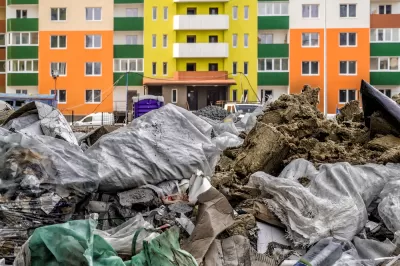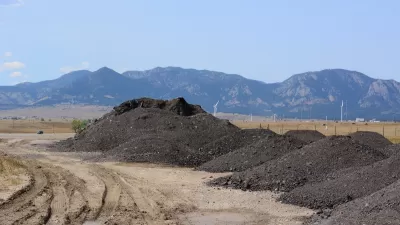Programs that make folks pay for garbage services based on how much they throw away can cut down trash in landfills. Designers are looking for ways to adapt these programs to multiunit buildings.

Policy makers looking to curb waste have had some success with "pay-as-you-throw" schemes, which charge families different amounts for their trash service based on how much waste they produce. One such program in Boulder, Colorado was shown to cut waste to landfills by more than 30%. Now designers are looking to adapt this type of program to multi-unit buildings where it can be much more tricky to tell who is throwing away what and the tragedy of the commons can take hold.
"We think a combination of the right incentives and, yes, trash chute innovations can enable pay-as-you-throw to take hold in apartment buildings — and, over time, improve landfill diversion and recycling rates in cities," Jesse Shapins writes in a Medium post on behalf of Side Walk Talk. In designing for an apartment building, the team had a series of unique challenges to work through, they needed to make something that would identify what apartment was throwing away what garbage without making the residents feel as if their privacy was being invaded.
To test the system, the team created a pilot group and, while they didn't charge the test subjects based on what they threw out, they did apply nudges. "The ultimate goal of a pay-as-you-throw program is to increase recycling rates. In this prototype, we didn’t introduce payment as an incentive, and instead tested simpler behavioral nudges of showing people how much trash they threw away in comparison with neighbors," Shapins writes. The groups tests are not over and the team hopes to continue to scale up to a full building. "We remain focused on the fundamental first step: making trash individually measurable within a multi-family setting," Shapins says.
FULL STORY: We held a one-week design sprint to build a smart trash chute. Here’s what we learned

Planetizen Federal Action Tracker
A weekly monitor of how Trump’s orders and actions are impacting planners and planning in America.

Map: Where Senate Republicans Want to Sell Your Public Lands
For public land advocates, the Senate Republicans’ proposal to sell millions of acres of public land in the West is “the biggest fight of their careers.”

Restaurant Patios Were a Pandemic Win — Why Were They so Hard to Keep?
Social distancing requirements and changes in travel patterns prompted cities to pilot new uses for street and sidewalk space. Then it got complicated.

DC Area County Eliminates Bus Fares
Montgomery County joins a growing trend of making transit free.

Platform Pilsner: Vancouver Transit Agency Releases... a Beer?
TransLink will receive a portion of every sale of the four-pack.

Toronto Weighs Cheaper Transit, Parking Hikes for Major Events
Special event rates would take effect during large festivals, sports games and concerts to ‘discourage driving, manage congestion and free up space for transit.”
Urban Design for Planners 1: Software Tools
This six-course series explores essential urban design concepts using open source software and equips planners with the tools they need to participate fully in the urban design process.
Planning for Universal Design
Learn the tools for implementing Universal Design in planning regulations.
Heyer Gruel & Associates PA
JM Goldson LLC
Custer County Colorado
City of Camden Redevelopment Agency
City of Astoria
Transportation Research & Education Center (TREC) at Portland State University
Camden Redevelopment Agency
City of Claremont
Municipality of Princeton (NJ)





























